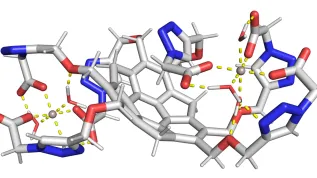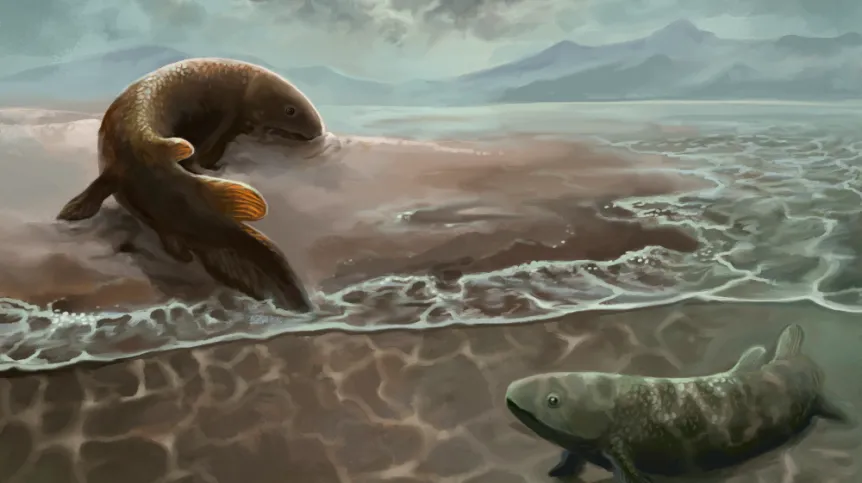
Researchers in Poland have uncovered the oldest known evidence of vertebrate movement on land.
Fossils over 400 million years old from the Świętokrzyskie Mountains show that lungfish were the first vertebrates to venture onto land, predating the earliest fully terrestrial tetrapods by roughly 10 million years.
The discovery was made by scientists from the Polish Geological Institute – National Research Institute: Piotr Szrek, PhD, Katarzyna Grygorczyk, Sylwester Salwa, PhD, Patrycja Dworczak, PhD, and Professor Alfred Uchman from Jagiellonian University.
Their findings were published in Scientific Reports.
The tracks, identified as Reptanichnus acutori (“crawling pioneer”), were found in abandoned sandstone quarries in Ujazd and Kopiec during 2020–2021.
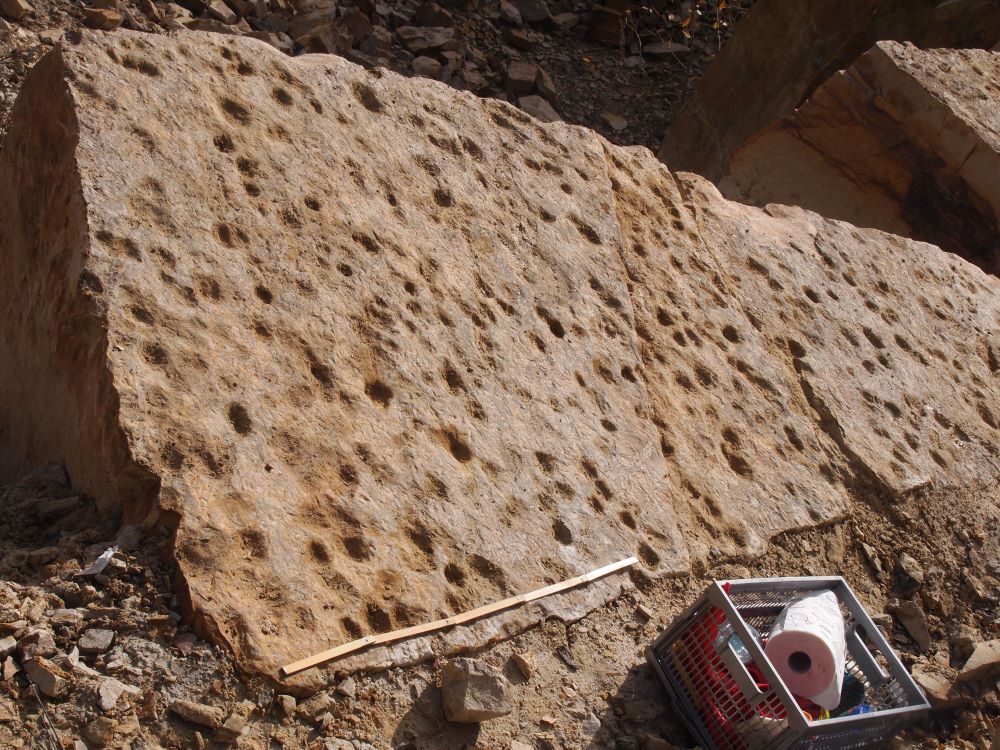
Researchers said the prints record dragging of the body, tail, and snout, which the fish used to anchor itself while moving.
“This track was made by a fish moving in very shallow water or even on exposed sediment, with at least part of its body above the surface. In this state, buoyancy is reduced or absent, making swimming impossible. Under these conditions, the tracks were left by all parts of the fish's body involved in locomotion,” Piotr Szrek said.
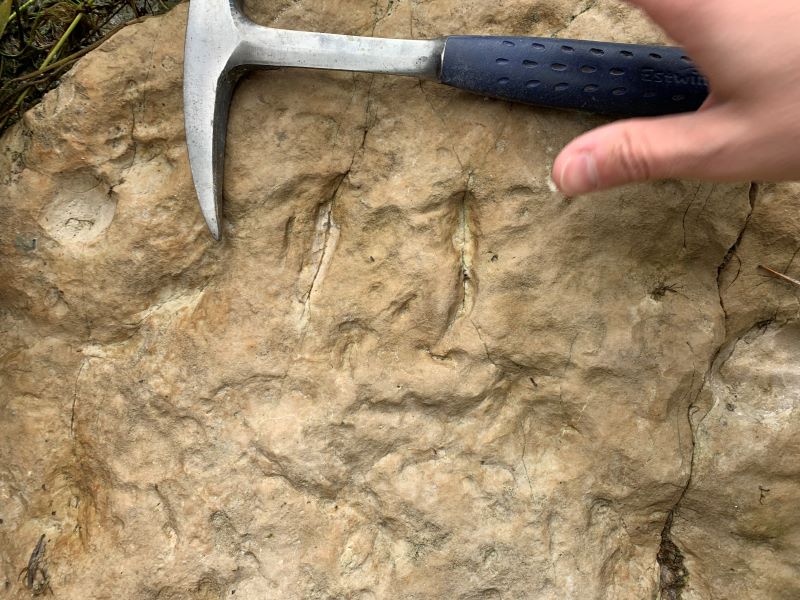
The fossils were preserved by a layer of volcanic ash that quickly covered the tracks.
Using 3D scanning and experiments with the modern African lungfish Protopterus annectens, the team found that modern lungfish leave almost identical tracks while crawling.
Traces of early vertebrates moving on land are rare, known from only a few sites in Europe and one in Australia.
The previously oldest examples, from the Middle Devonian, belong to fully terrestrial tetrapods, also discovered in the Świętokrzyskie Mountains.
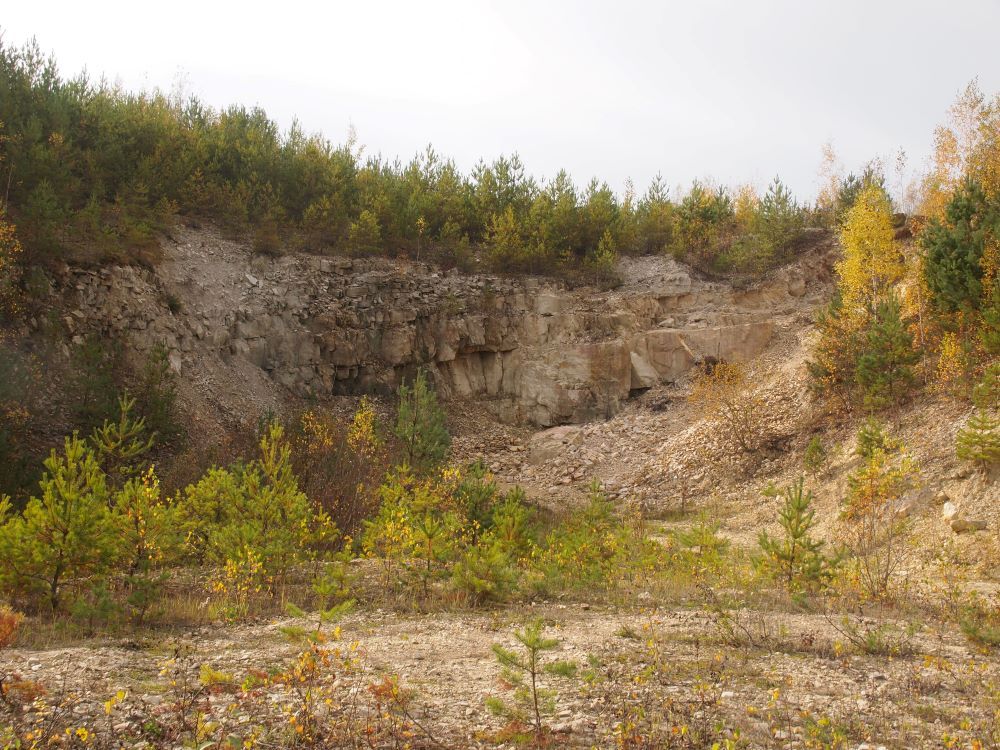
“The tracks we discovered, left by lungfish, are evidence that vertebrates were testing their terrestrial locomotion skills about 10 million years earlier than tetrapods,” Szrek said.
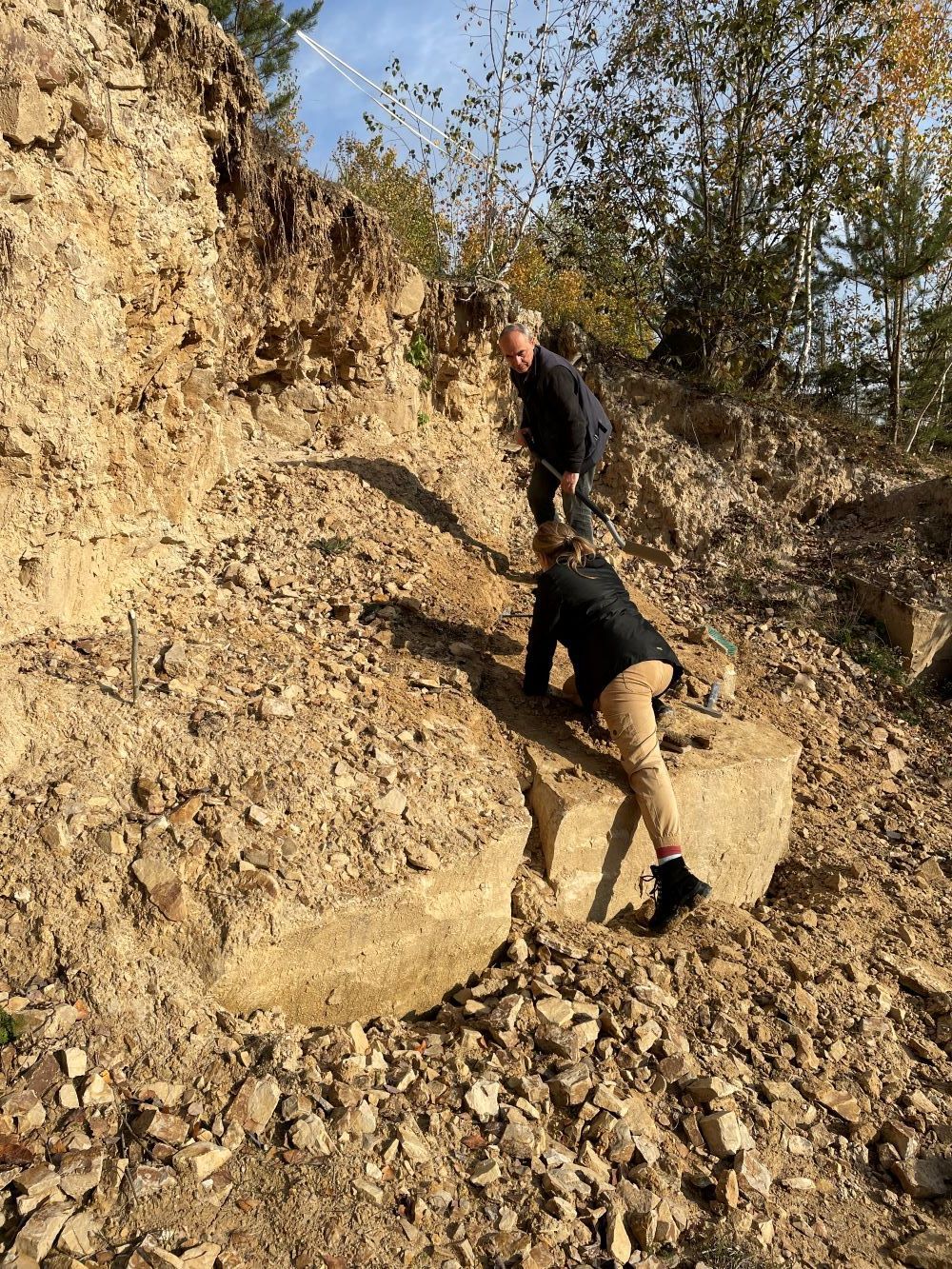
The study also revealed early signs of lateralisation, or the dominance of one side of the body.
The scientists observed that Devonian lungfish almost always pressed their snouts into the sediment, tilting left.
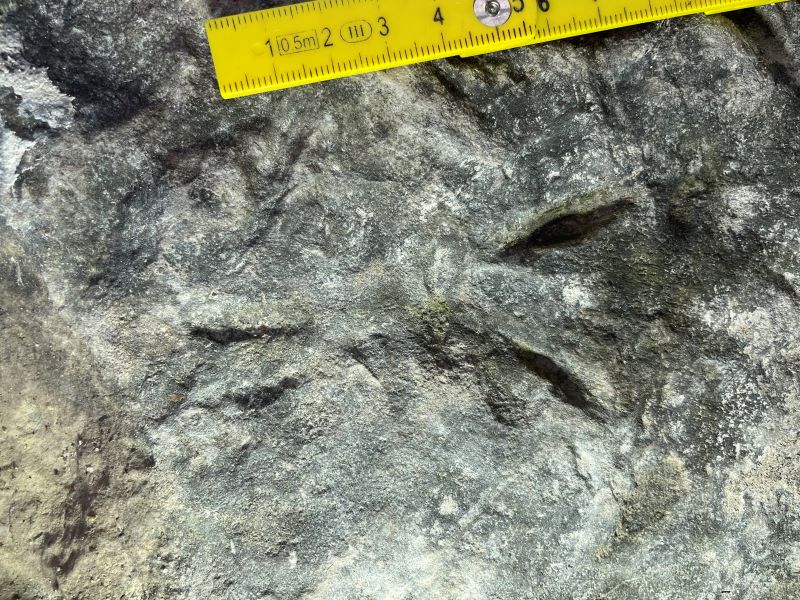
“We previously recorded the presence of imprints of a fish's snout pressed into the sediment, combined with a leftward body rotation, as evidence of almost exclusive dominance of the left side of the body, based on 10 tracks found in Ujazd. We supplemented these observations with 26 additional tracks from Ujazd and Kopiec. The set of 35 left-rotating tracks appears statistically significant and may constitute the oldest known example of lateralisation in vertebrates,” Szrek said.
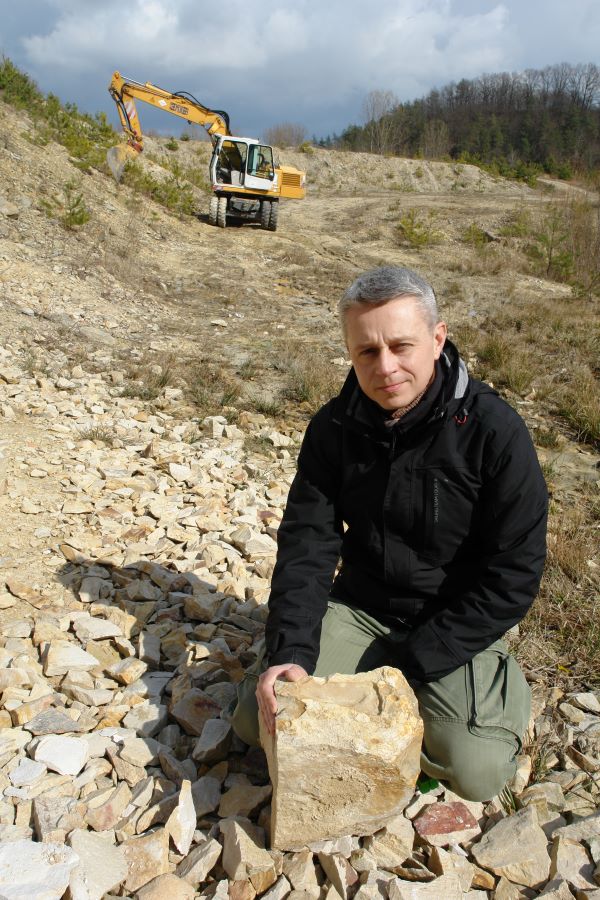
Nauka w Polsce, Ewelina Krajczyńska-Wujec (PAP)
ekr/ zan/ jw/

